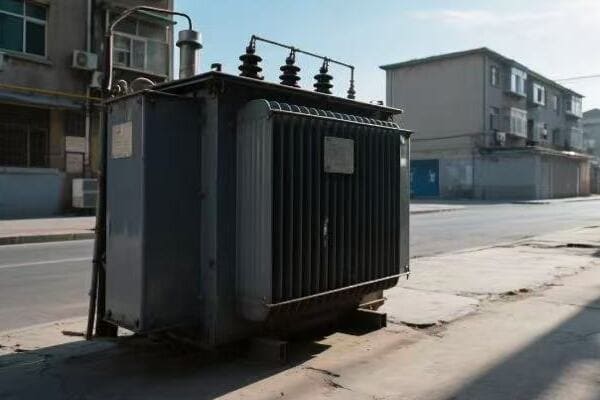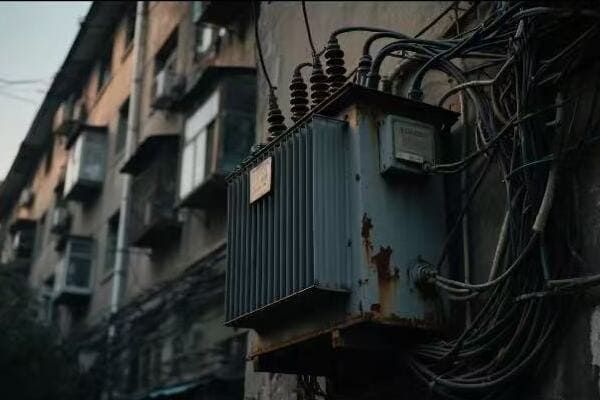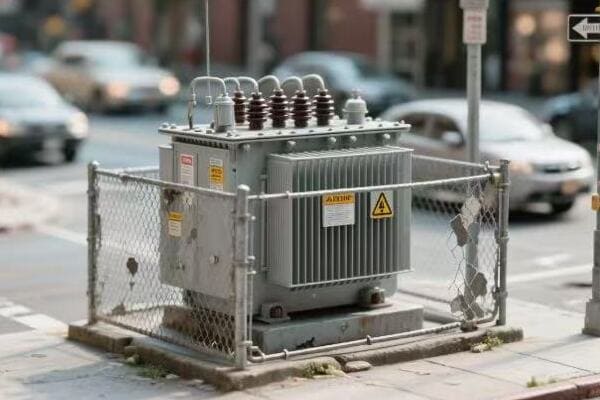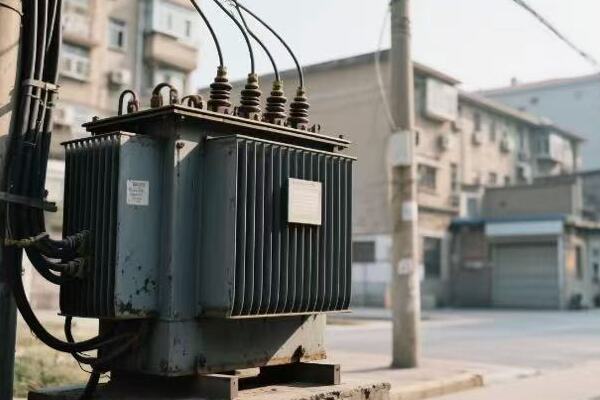Distribution Transformer Price: Balancing Cost-Efficiency and Performance in Modern Power Grid Investments?
Are you struggling to justify the cost of upgrading your power grid? The price of distribution transformers often raises eyebrows, but the long-term benefits might surprise you.
Distribution transformer prices reflect a balance between cost-efficiency and performance in modern power grid investments. While initial costs may be high, advanced transformers offer improved efficiency, longer lifespans, and smart grid compatibility, potentially leading to significant long-term savings and improved grid reliability.

As someone who’s been in the power industry for years, I’ve seen firsthand how crucial the right transformer choice can be. Let’s dive into the world of distribution transformer pricing and explore how to make smart investment decisions for your power grid.
Investment Strategies: Navigating Transformer Costs in Grid Modernization Projects?
Ever wondered how to justify the hefty price tag of modern transformers to your finance department? The key lies in understanding the long-term benefits of these investments.
Effective investment strategies for transformer costs in grid modernization involve considering total cost of ownership, future-proofing capabilities, and potential energy savings. By focusing on long-term value rather than just upfront costs, utilities can make smarter decisions that benefit both their bottom line and grid performance.

Let’s break down the key factors in navigating transformer costs:
Total Cost of Ownership (TCO)
Looking beyond the price tag:
- Initial purchase price of the transformer
- Installation and commissioning costs
- Operational costs, including energy losses
- Maintenance and repair expenses over the transformer’s lifetime
- End-of-life disposal or recycling costs
Future-Proofing Capabilities
Investing in adaptability:
- Smart grid compatibility for future upgrades
- Scalability to meet growing power demands
- Ability to integrate with renewable energy sources
- Cybersecurity features to protect against evolving threats
Energy Efficiency Savings
Calculating long-term benefits:
- Reduced energy losses compared to older models
- Lower cooling requirements and associated costs
- Potential for energy rebates or incentives from utilities
- Contribution to meeting regulatory efficiency standards
Reliability and Downtime Reduction
Valuing uninterrupted service:
- Improved reliability leading to fewer outages
- Reduced maintenance downtime
- Lower risk of catastrophic failures
- Enhanced customer satisfaction and reduced complaint handling costs
Environmental Impact Considerations
Factoring in sustainability:
- Lower carbon footprint from improved efficiency
- Reduced use of insulating oils or use of biodegradable alternatives
- Longer lifespan reducing waste and replacement frequency
- Compliance with current and future environmental regulations
| Investment Factor | Short-Term Impact | Long-Term Benefit |
|---|---|---|
| Higher Initial Cost | Increased capital expenditure | Reduced operational expenses |
| Smart Features | Additional upfront investment | Future-proof grid capabilities |
| Energy Efficiency | Immediate reduction in losses | Significant cost savings over time |
| Reliability Improvements | Initial testing and setup costs | Fewer outages and maintenance needs |
| Environmental Considerations | Potential premium for eco-friendly options | Regulatory compliance and sustainability |
I remember a project where we were upgrading a city’s aging transformer network. The utility was hesitant about the high upfront costs of advanced models. We conducted a comprehensive TCO analysis, factoring in energy savings and reduced maintenance. The results were eye-opening. Over a 20-year period, the new transformers would save the utility millions in operational costs, far outweighing the initial investment. The CFO, initially skeptical, became our biggest advocate after seeing the numbers.
Another interesting case was a rural electric cooperative weighing the costs of smart-enabled transformers. They were concerned about future-proofing but struggled with the budget. We developed a phased approach, strategically placing smart transformers at key nodes. This allowed them to build a smart grid foundation without breaking the bank. Five years later, they’re expanding the smart network with ease, thanks to the groundwork laid by those initial investments.
These experiences taught me that navigating transformer costs isn’t just about finding the cheapest option. It’s about making informed decisions that balance immediate budget constraints with long-term operational benefits. By considering factors like TCO, future-proofing, and efficiency savings, utilities can make investment choices that not only modernize their grid but also provide lasting financial benefits. It’s a strategy that turns a necessary expense into a valuable long-term asset.
Price vs. Performance: Analyzing the Long-Term Value of Advanced Distribution Transformers?
When it comes to distribution transformers, the age-old question persists: Is it worth paying more for advanced models? The answer lies in understanding the long-term value proposition.
Advanced distribution transformers offer superior performance that can justify their higher price tags. Their improved efficiency, longer lifespan, and advanced features contribute to lower total cost of ownership and enhanced grid reliability, often outweighing the initial investment over time.

Let’s dive into the key aspects of this price-performance balance:
Efficiency Gains
Reducing losses, increasing savings:
- Lower core losses due to advanced materials like amorphous metals
- Reduced copper losses from improved winding designs
- Better performance under varying load conditions
- Cumulative energy savings over the transformer’s lifetime
Lifespan Extension
Investing in longevity:
- Robust construction techniques for extended operational life
- Advanced cooling systems to reduce thermal stress
- Better resistance to short circuits and overloads
- Potential for 40+ years of service compared to 25-30 for standard models
Smart Grid Capabilities
Preparing for the future:
- Built-in monitoring and communication features
- Ability to participate in demand response programs
- Support for bi-directional power flow with distributed generation
- Enhanced data collection for predictive maintenance
Reliability Improvements
Minimizing downtime and disruptions:
- Advanced protection features against faults and surges
- Self-diagnostic capabilities for early problem detection
- Improved load management to prevent overloading
- Faster response to grid disturbances
Environmental Benefits
Sustainability as a long-term investment:
- Reduced carbon footprint from improved efficiency
- Use of eco-friendly materials and insulating fluids
- Lower noise pollution in urban areas
- Easier compliance with evolving environmental regulations
| Performance Aspect | Standard Transformer | Advanced Transformer | Long-Term Impact |
|---|---|---|---|
| Efficiency | 97-98% efficient | 99%+ efficient | Significant energy savings |
| Lifespan | 25-30 years | 40+ years | Reduced replacement costs |
| Smart Features | Limited or none | Comprehensive | Future-proof grid capabilities |
| Reliability | Basic protection | Advanced safeguards | Fewer outages and maintenance |
| Environmental Impact | Standard compliance | Exceeds standards | Lower carbon footprint, better sustainability |
I recall a project where we were comparing standard and advanced transformers for a suburban development. The developer was initially drawn to the lower price of standard models. However, when we calculated the energy savings over a 30-year period, the advanced transformers showed a clear advantage. The efficiency gains alone would cover the price difference within 12 years. The developer was amazed, saying, "I never thought a transformer could be an investment that pays for itself."
Another eye-opening experience was with a utility struggling with frequent outages in an industrial area. We installed advanced transformers with self-diagnostic capabilities. Within the first year, the system prevented three major failures by detecting issues early. The utility’s reliability metrics improved dramatically, and they received fewer complaints from industrial customers. The operations manager told me, "These transformers aren’t just equipment; they’re like having an expert technician on-site 24/7."
These experiences have shown me that the price-performance equation for advanced transformers goes far beyond the initial cost. When you factor in efficiency gains, extended lifespan, smart capabilities, improved reliability, and environmental benefits, the long-term value becomes clear. It’s not just about buying a piece of equipment; it’s about investing in the future of your power grid. For utilities and developers looking to build resilient, efficient, and future-proof networks, the higher price of advanced transformers often translates to superior value over time.
Technological Impact: How Innovation Shapes Transformer Pricing and Efficiency?
Ever wondered why some transformers come with a hefty price tag? The answer often lies in the cutting-edge technology packed inside. But how exactly does innovation impact both pricing and efficiency?
Technological innovations in transformer design significantly influence both pricing and efficiency. Advanced materials, smart monitoring systems, and improved manufacturing processes lead to higher upfront costs but result in transformers that are more efficient, reliable, and capable of meeting the demands of modern smart grids.

Let’s explore the key technological advancements shaping transformer economics:
Advanced Core Materials
Pushing the boundaries of efficiency:
- Amorphous metal cores reducing no-load losses by up to 70%
- High-grade silicon steel improving overall efficiency
- Nanocrystalline materials offering superior magnetic properties
- Higher material costs offset by long-term energy savings
Smart Monitoring Systems
Adding intelligence to transformers:
- Integrated sensors for real-time performance monitoring
- Data analytics for predictive maintenance
- Remote diagnostics capabilities reducing site visits
- Initial cost increase balanced by improved reliability and lifespan
Improved Insulation Technologies
Enhancing performance and longevity:
- Biodegradable ester fluids as alternatives to mineral oil
- Advanced solid insulation materials for better thermal management
- Hybrid insulation systems optimizing cost and performance
- Higher upfront costs but improved safety and environmental benefits
Additive Manufacturing Techniques
Revolutionizing production processes:
- 3D printing of complex transformer components
- Reduced material waste in manufacturing
- Ability to create optimized designs not possible with traditional methods
- Initial investment in technology leading to long-term cost reductions
Power Electronics Integration
Enhancing grid interaction capabilities:
- Solid-state transformer technologies for improved control
- Integration of voltage regulation features
- Enhanced compatibility with renewable energy sources
- Higher costs offset by increased functionality and grid support capabilities
| Technology | Impact on Price | Efficiency Gain | Long-Term Benefit |
|---|---|---|---|
| Amorphous Cores | 15-25% increase | Up to 70% less core loss | Significant energy savings |
| Smart Monitoring | 10-20% increase | Improved operational efficiency | Reduced maintenance costs |
| Advanced Insulation | 5-15% increase | Better thermal performance | Extended transformer life |
| Additive Manufacturing | Initial investment | Optimized designs | Reduced production costs over time |
| Power Electronics | 20-30% increase | Enhanced grid support | Improved power quality and control |
I remember a project where we were introducing amorphous core transformers to a skeptical utility. The price difference was substantial, and they were hesitant. We set up a pilot program, installing these high-efficiency units alongside traditional ones. After a year, the energy savings were undeniable. The utility’s chief engineer told me, "I was a doubter, but these numbers don’t lie. We’re rolling this out across the board now."
Another fascinating experience was working with a manufacturer adopting additive manufacturing for transformer components. The initial investment was significant, but the results were game-changing. They could produce complex, efficiency-optimized parts that were impossible with traditional methods. Within two years, their production costs dropped, and they were creating some of the most efficient transformers on the market. The production manager said, "We’re not just making transformers anymore; we’re printing the future of energy distribution."
These experiences have shown me that the impact of technology on transformer pricing and efficiency is profound and multifaceted. While innovations often lead to higher upfront costs, they also open doors to levels of efficiency, reliability, and functionality that were previously unattainable. For utilities and grid operators looking to future-proof their infrastructure, investing in these technologies isn’t just about buying a more expensive transformer – it’s about investing in a more resilient, efficient, and capable power distribution system. As we continue to push the boundaries of what’s possible in transformer design, the balance between cost and performance will undoubtedly continue to evolve, driving the industry towards ever-greater heights of efficiency and capability.
Regulatory Landscape: Balancing Compliance and Cost in Transformer Selection?
Navigating the complex world of regulations while managing costs can feel like walking a tightrope. How do you ensure your transformer choices meet all the rules without breaking the bank?
Balancing compliance and cost in transformer selection requires a strategic approach to meet regulatory standards while optimizing investments. This involves understanding current and future regulations, evaluating the cost implications of compliance, and choosing transformers that offer the best balance of performance and regulatory adherence.

Let’s break down the key aspects of navigating this regulatory landscape:
Energy Efficiency Standards
Meeting and exceeding requirements:
- DOE efficiency standards for distribution transformers
- EU Ecodesign requirements for power transformers
- Voluntary efficiency programs like ENERGY STAR
- Balancing higher efficiency with increased material costs
Environmental Regulations
Ensuring eco-friendly operations:
- Restrictions on oil types and PCB content
- Noise emission limits in urban areas
- End-of-life disposal and recycling requirements
- Cost implications of environmentally friendly materials and designs
Safety Standards
Prioritizing operational safety:
- IEEE and IEC standards for transformer design and testing
- Fire safety requirements, especially for indoor installations
- Seismic standards for earthquake-prone regions
- Balancing enhanced safety features with cost considerations
Smart Grid Compatibility
Preparing for the future of power distribution:
- Interoperability standards for smart grid communications
- Cybersecurity requirements for connected devices
- Data privacy regulations for smart meter integration
- Investing in smart features vs. traditional designs
Renewable Energy Integration
Adapting to changing energy landscapes:
- Standards for handling reverse power flow from distributed generation
- Voltage regulation requirements for variable renewable inputs
- Harmonic distortion limits in presence of inverter-based resources
- Balancing costs of advanced features with renewable integration benefits
| Regulatory Area | Compliance Requirement | Cost Implication | Long-Term Benefit |
|---|---|---|---|
| Energy Efficiency | Meet DOE standards | Higher material costs | Reduced operating expenses |
| Environmental | Use eco-friendly materials | Increased initial investment | Lower environmental impact, future compliance |
| Safety | Adhere to IEEE/IEC standards | Additional safety features | Reduced liability, improved reliability |
| Smart Grid | Ensure interoperability | Investment in communication tech | Future-proof grid capabilities |
| Renewable Integration | Handle bidirectional flow | Advanced control systems | Improved grid stability with renewables |
I recall a project where a utility was struggling to meet new efficiency standards without blowing their budget. We developed a phased approach, gradually replacing their oldest transformers with high-efficiency models. By targeting the least efficient units first, they saw immediate energy savings that helped offset the higher costs. The utility’s planning director told me, "This strategy let us turn a regulatory headache into a long-term win for both our budget and our efficiency goals."
Another interesting case involved a municipality grappling with strict noise regulations for urban substations. We introduced them to ultra-low noise transformers that used advanced cooling and insulation techniques. While more expensive, these units allowed them to expand capacity in residential areas without violating noise ordinances. The city planner remarked, "We thought we’d have to choose between growth and compliance. These transformers let us achieve both."
These experiences have taught me that navigating the regulatory landscape in transformer selection is about more than just ticking boxes. It’s about finding smart, strategic ways to meet or exceed regulatory requirements while still managing costs effectively. By understanding the long-term implications of compliance, utilities can make informed decisions that not only satisfy current regulations but also position them well for future changes. The key is to view regulatory compliance not as a burden, but as an opportunity to invest in more efficient, safer, and future-ready power distribution systems.
Smart Grid Economics: Justifying Premium Prices for Intelligent Distribution Transformers?
Ever wondered if those high-priced smart transformers are really worth the investment? In the age of smart grids, this question is more relevant than ever.
Justifying premium prices for intelligent distribution transformers in smart grids involves analyzing their advanced capabilities, long-term cost savings, and grid optimization benefits. While initially more expensive, these transformers offer features that can significantly enhance grid efficiency, reliability, and flexibility, potentially leading to substantial operational savings over time.

Let’s dive into the economics of smart transformers:
Advanced Monitoring and Diagnostics
Preventing issues before they occur:
- Real-time monitoring of key parameters (temperature, load, oil condition)
- Predictive maintenance capabilities reducing unexpected failures
- Remotediagnostics capabilities minimizing on-site inspections
- Early detection of potential faults, extending transformer life
Load Management and Efficiency
Optimizing power distribution:
- Dynamic load balancing across phases
- Voltage regulation for improved power quality
- Reduced energy losses through intelligent operation
- Ability to handle bidirectional power flow from distributed generation
Grid Integration and Communication
Enhancing network intelligence:
- Seamless integration with smart grid management systems
- Real-time data sharing for improved grid visibility
- Participation in demand response programs
- Enhanced cybersecurity features protecting critical infrastructure
Renewable Energy Support
Facilitating green energy transition:
- Ability to manage intermittent renewable energy inputs
- Support for microgrid operations and islanding capabilities
- Enhanced power quality management for inverter-based resources
- Flexibility to adapt to changing energy landscapes
Lifecycle Cost Benefits
Evaluating long-term economic impact:
- Reduced energy losses over transformer lifetime
- Lower maintenance and operational costs
- Extended service life through better asset management
- Potential for deferred or avoided infrastructure upgrades
| Smart Feature | Initial Cost Impact | Long-Term Economic Benefit |
|---|---|---|
| Advanced Monitoring | 15-25% price increase | 20-30% reduction in maintenance costs |
| Load Management | 10-20% price increase | 5-10% improvement in energy efficiency |
| Grid Integration | 20-30% price increase | Enhanced grid reliability and flexibility |
| Renewable Support | 15-25% price increase | Improved integration of renewable sources |
| Lifecycle Benefits | Higher upfront investment | Significant TCO reduction over 20+ years |
I remember a project where we were implementing smart transformers in a rapidly growing suburban area. The utility was hesitant about the high initial costs. We conducted a comprehensive cost-benefit analysis, factoring in projected growth and renewable integration. The results were striking. Over a 15-year period, the smart transformers would not only pay for themselves but also generate substantial savings through reduced losses and maintenance. The utility’s CFO, initially skeptical, became a strong advocate after seeing the long-term financial projections.
Another eye-opening experience was with a rural electric cooperative struggling with reliability issues. We installed smart transformers at key nodes in their network. Within the first year, the predictive maintenance features prevented three major outages by identifying developing issues early. The co-op’s operations manager told me, "These transformers aren’t just distributing power; they’re actively managing our entire grid. We’ve seen a 40% reduction in outage minutes."
These experiences have shown me that justifying the premium prices for intelligent distribution transformers goes beyond simple cost comparisons. It’s about understanding the transformative impact these devices can have on the entire grid ecosystem. While the upfront costs can be significant, the long-term benefits in terms of efficiency, reliability, and grid flexibility often far outweigh the initial investment.
Smart transformers are not just components of the grid; they’re active participants in creating a more resilient, efficient, and future-ready power distribution system. For utilities looking to modernize their infrastructure and prepare for the challenges of tomorrow’s energy landscape, investing in these intelligent devices can be a smart economic decision that pays dividends for years to come.
Conclusion
Distribution transformer pricing involves balancing cost-efficiency with performance, considering long-term value, technological advancements, regulatory compliance, and smart grid capabilities. Informed decisions in transformer selection are crucial for building efficient, reliable, and future-ready power distribution systems.
Free CHBEB Transformer Catalog Download
Get the full range of CHBEB transformers in one catalog.
Includes oil-immersed, dry-type, pad-mounted, and custom solutions.
Quick Message
Request A free quote
We'd like to work with you
- +86 15558785111
- [email protected]
- +86 15558785111
What We Do
CHINA BEI ER BIAN (CHBEB) GROUP, with 218 million in registered capital, originated from Beijing Beierbian Transformer Group. Headquartered in Beijing for R&D, it operates major production bases in Nanjing and Yueqing, producing high-quality products.
Latest Product
address
BeiJing
No 3,RongJing East Road,BeiJing Economic Technological Development Area,BeiJing,China
JiangSu
No 7️Xiangfeng Road,Jiangning,NanJing,JiangSu,China
WenZhou
No.211, Wei 16 Road, Industrial Zone, Yueqing, Wenzhou, Zhejiang, China.
XiangYang Industrial Zone ,YueQing,WenZhou,ZheJiang,China
contact us
- [email protected]
- +86 13057780111
- +86 13057780111
- +86 15558785111
Copyright © Bei Er Bian Group


